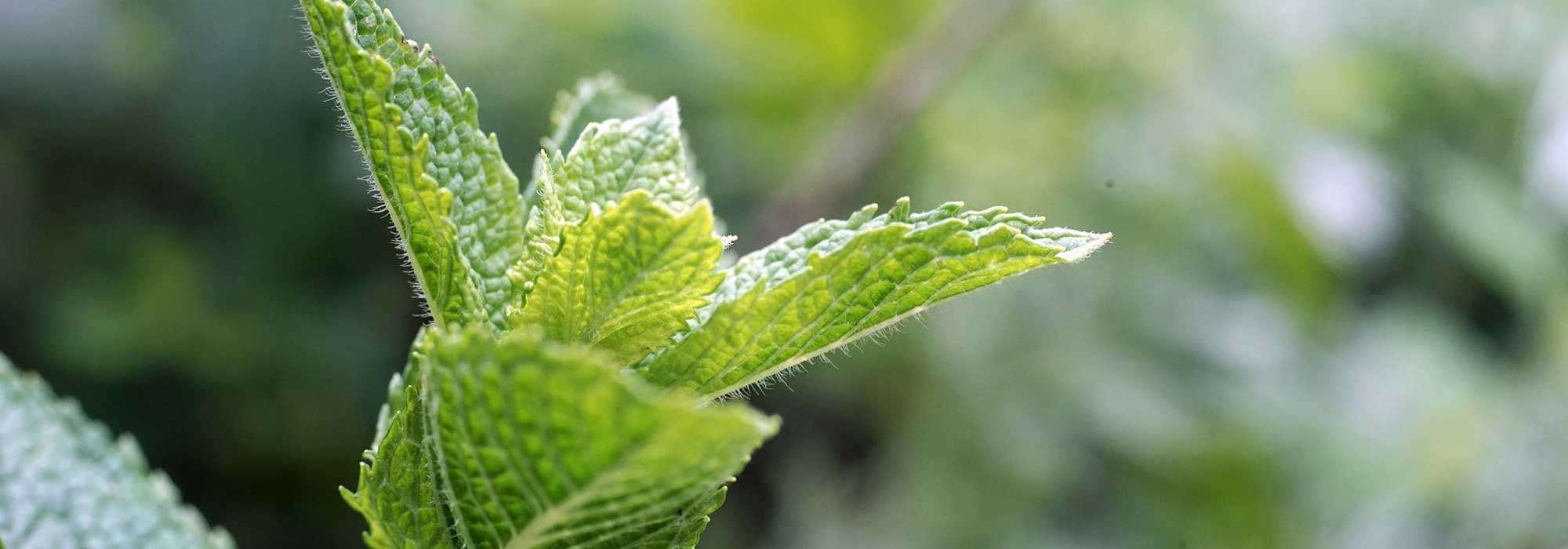
6 essential mints
A selection of the easiest mint varieties to grow
Contents
Mint is an aromatic plant that’s easy to grow. There are many varieties with a range of qualities and aromas, used differently depending on their characteristics.
Starting out on your vegetable patch and unsure which mint to choose? Here is our selection of the 6 mint varieties easiest to grow, ideal for beginners.
Peppermint, the variety richest in menthol
Peppermint is a variety with pointed, dark leaves that give off a very pronounced scent. Their high concentration of menthol is responsible for their penetrating peppery scent. At ripeness, Mentha x piperata reaches between 40 and 60 cm maximum height. It has stems with a square cross-section, slightly villous and purplish, as well as ovate, dark green leaves with serrated edges.
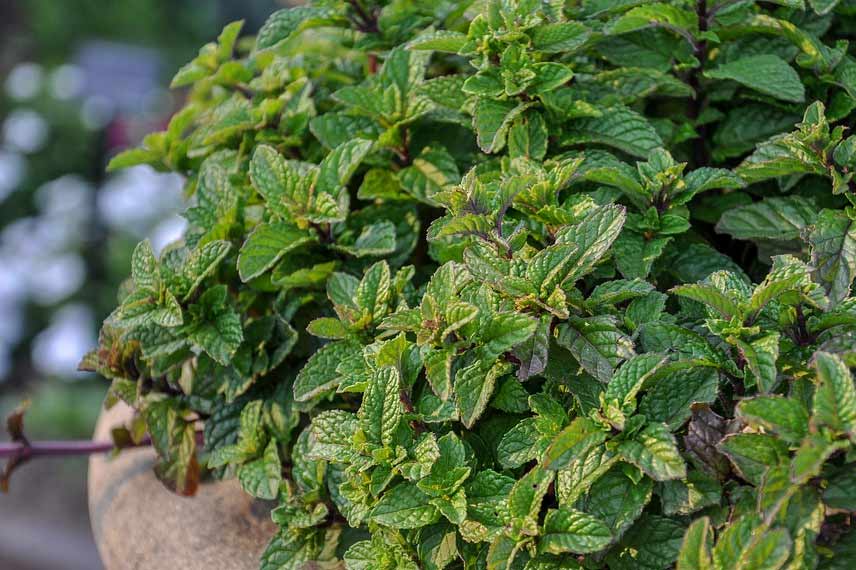
Use of Mentha x piperata
Peppermint leaves are used to flavour many dishes: salads, grilled foods, sauces, desserts or infusions. They are preferably consumed fresh, or dried and stored in an airtight, closed jar kept away from light. Mentha x piperata is also used in herbal medicine in many cases.
Growing peppermint
Hardy and perennial, peppermint can be grown in open ground or in a pot, in partial shade preferably (although it tolerates non-scorching sun) in fresh, rich, well-drained soil. Plant in spring or autumn for harvest between March and October. Beware its running roots, which allow it to quickly colonise surrounding areas. Near vegetable patches, peppermint helps to repel naturally parasitic pests.
Read also
Mint: planting, growing, propagatingGreen mint, a sweet and refreshing variety
Spearmint is a well-known variety of the genus Mentha, also known as sweet mint. These pointed leaves 5 to 10 cm long, crinkled and very fragrant, are light green in colour and give off a fresh, menthol-like and fairly mild aroma. The flowering of Mentha spicata takes the form of tubular flowers, lilac to purple in colour, arranged in spikes that bloom at the end of summer.
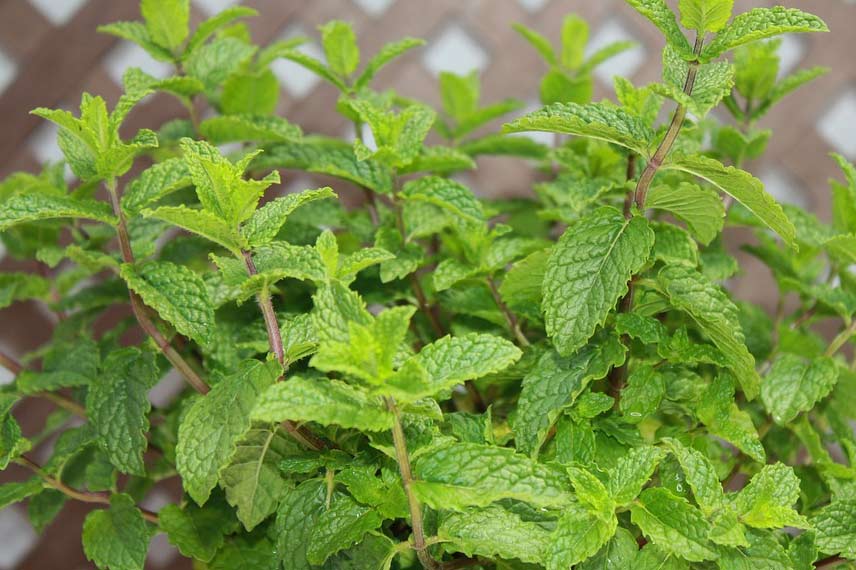
Use of Mentha spicata
In cooking, spearmint is particularly suited to flavouring meats. It is also prepared as an infusion, and it is part of the composition of the famous mint tea. Besides its culinary qualities, spearmint is also used as a medicinal plant for its digestive, carminative, antiseptic, tonic and stimulating properties. Mosquito-repellent plant, its crushed leaves help relieve insect bites. Since Mentha spicata cleanses the mouth and freshens breath, it is used in toothpaste production.
To grow spearmint
Beware, it is a plant that is rhizomatous with a running stump that can very quickly invade your whole garden. While it can be planted in open ground, it is therefore better to grow mint in pots to easily limit its spread. Place it preferably in a semi-shaded spot, if possible near the vegetable garden to keep unwanted pests away (aphids, ants, rodents…). Leaf harvest takes place all year round, and more particularly between March and October.
Discover other Mint
View all →Available in 2 sizes
Available in 2 sizes
Available in 1 sizes
Available in 1 sizes
Available in 1 sizes
Chocolate mint, a chocolate-scented variety
La chocolate mint is one of the most interesting peppermint varieties to grow because of its foliage that gives off a subtle chocolate scent. Its scent evokes After Eight sweets that combine chocolate and mint.
Mentha x piperita schocominze is a bushy herbaceous plant that can reach between 40 and 60 cm in height, and which has lanceolate intense green foliage, sometimes with more or less dark brown margins.
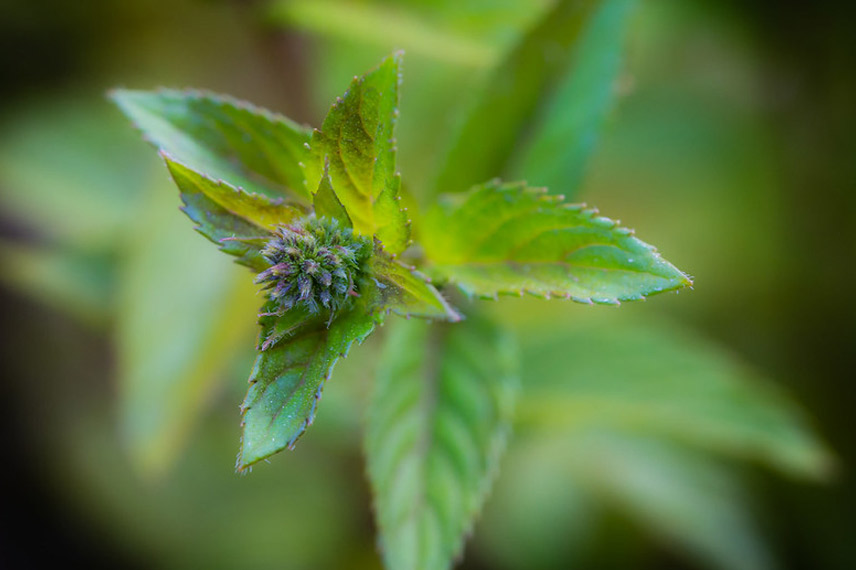
Chocolate mint – ©Denis Bourez – Flickr
Uses of Mentha x piperita ‘Schocominze’
In cooking, chocolate mint leaves are used to flavour infusions, but they can also be added to tea or hot chocolate. This peppermint variety is also used to flavour desserts.
Growing chocolate mint
A hardy perennial plant grown for two or three consecutive years, chocolate mint will grow almost anywhere. Take care, however, as it spreads very quickly because of its running roots. To limit its spread, grow it in a pot. Plant in spring (April–June) or in late summer (August–September) for a harvest as needed, from March to October. Whether in a pot or in the ground, place chocolate mint in a partly shaded position, in rich, fertile, cool soil. In the ground, water regularly during hot spells. In a pot, water about once a week, and repot every year. Chocolate mint is propagated by dividing clumps (in spring) or by propagation by cuttings.
Read also
Growing mint in potsMoroccan mint, variety traditionally used for mint tea
Moroccan mint is a bushy plant that can reach up to 70 cm tall. It has stems with a quadrangular cross-section, which themselves are equipped with light green leaves, crinkled and dentate that give off a pleasant, sweet, slightly fruity scent.
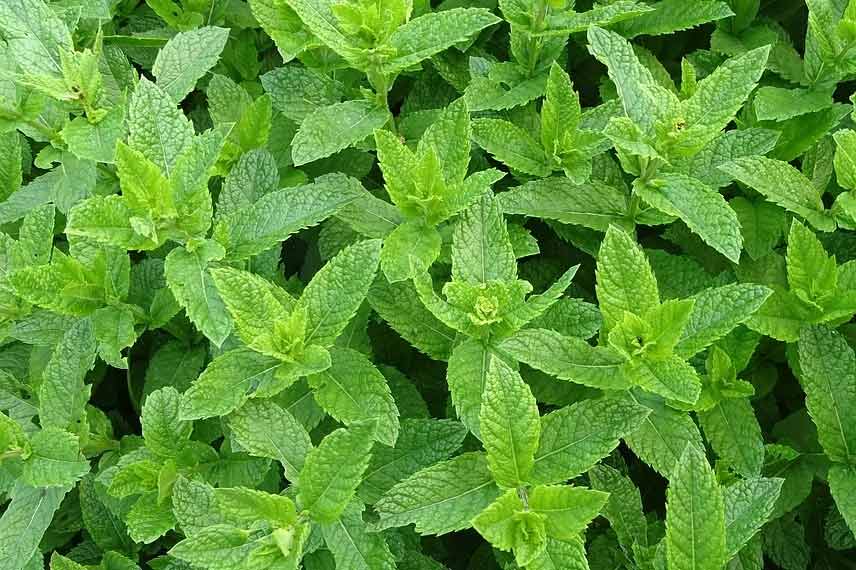
Use of Mentha spicata ‘Nannah’
Thanks to its very mellow fragrance, Moroccan mint is a variety ideal for making the famous mint tea. But its leaves can also be used to flavour savoury dishes such as grilled dishes, sauces and raw vegetables, as well as desserts such as confectionery, ice creams and various sweet treats. When prepared as an infusion, Mentha spicata ‘Nannah’ offers tonic and appetising properties, and aids digestion.
To grow Moroccan mint
Moroccan mint is a very vigorous perennial herbaceous plant whose rapid and extensive growth can quickly become a problem. Prefer to grow it in a pot to limit its spread in the garden. Robust, hardy and drought-resistant, Mentha spicata ‘Nannah’ appreciates partial shade and siliceous, rich, well-aerated soils that are well worked. It can adapt to many growing conditions, except very clayey, dry soils. If exposed to full sun, ensure it receives sufficient water.
Lemon mint, a lemon-scented variety
Lemon mint is a bushy, aromatic plant that grows on average 60 to 80 cm tall, and produces very fragrant leaves. This variety is indeed equipped with variegated green-and-yellow leaves that give off a very pleasant lemon scent.
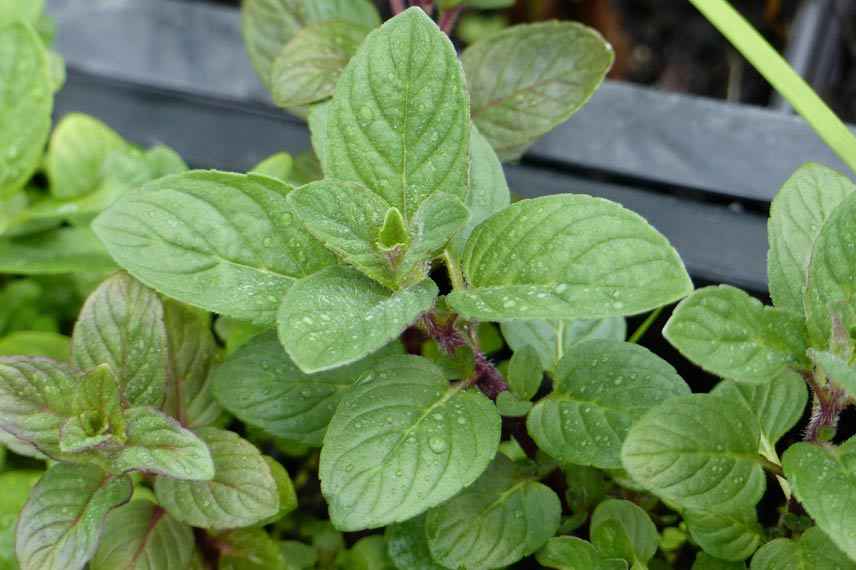
Uses of Mentha citrata
Lemon mint leaves are used to flavour cold drinks as well as infusions, tea and hot chocolate. Used from starter to dessert, Mentha citrata leaves perfectly complement raw vegetables, yoghurt-based sauces, grilled dishes and fruits. Lemon mint is also a medicinal plant with tonic, appetite-stimulating and digestive properties.
To grow lemon mint
Very easy to grow, hardy and perennial, Mentha citrata is perfect for beginner gardeners. It is best grown in open ground or in a pot in partial shade, although it can be planted anywhere. Again, lemon mint spreads very quickly thanks to its running roots. Growing in a pot will limit its spread. Thanks to its minty and lemony fragrance, it is ideal for vegetable gardens to deter unwanted insects. Lemon mint is planted in fairly rich, fresh and well-tilled soil. Water regularly (preferably in the evening) or equip with a drip irrigation system.
Bergamot mint, a citrus-scented variety
Bergamot mint is a variety of peppermint with rounded leaves that give off a scent with notes of citrus trees, and more specifically bergamot. Mentha citrata ‘Bergamote’ is a bushy, aromatic plant that can reach a height of 40 to 60 cm.
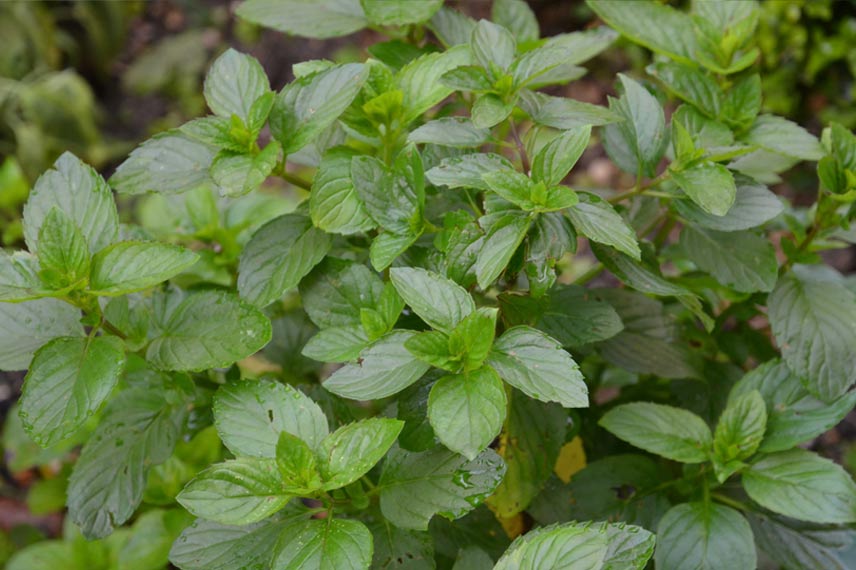
Bergamot mint ©La Ferme de Sainte Marthe
Uses of Mentha citrata ‘Bergamote’
Minty citrus tree aromas of bergamot mint are excellent for flavouring infusions and desserts. From a medicinal point of view, Mentha citrata ‘Bergamote’ is tonic, appetising and digestive, it helps treat bronchial problems, it calms nerves, cramps, migraines and insomnia.
Growing bergamot mint
Growing principles for Mentha citrata ‘Bergamote’ are the same as those of peppermint. It can therefore be grown both in open ground and in a pot, in a partially shaded position (if possible) and in soil kept moist while being well drained and rich. Plant in spring or autumn, and harvest all year, especially between March and October. Again, beware of its running roots which favour rapid expansion. Bergamot mint benefits from the same repellent virtues as other mint varieties.
Learn more
- Planting, growing, propagating… mint will soon hold no secrets for you.
- Also discover all our tips to successfully grow mint in pots.
- Finally, all our mint varieties are available in our online shop.
- Also discover our video on the different mint varieties
- Subscribe!
- Contents
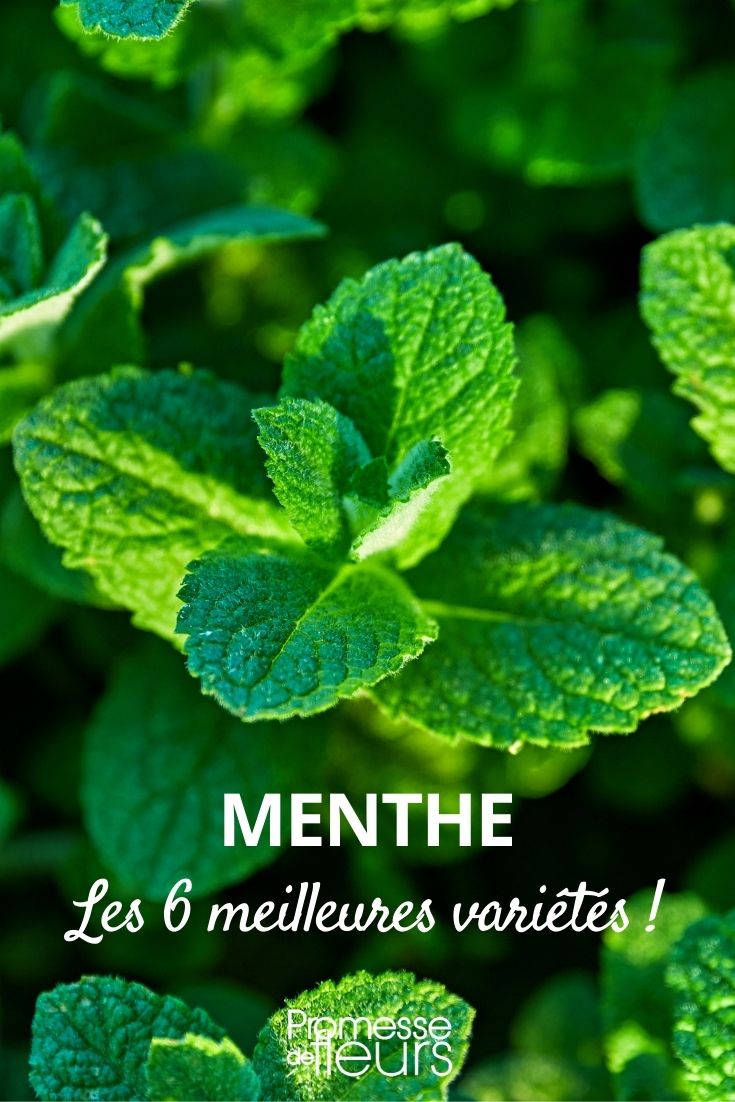































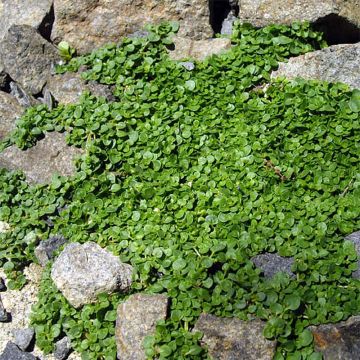
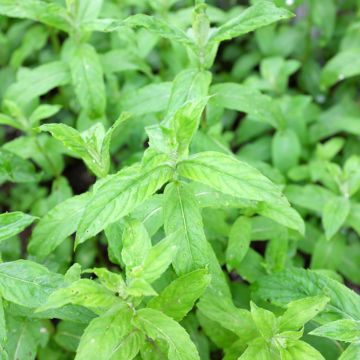

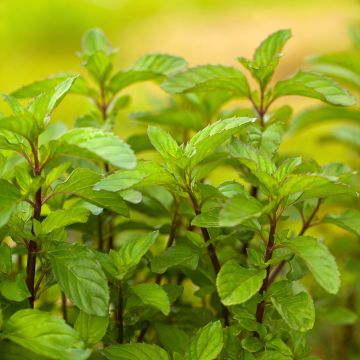
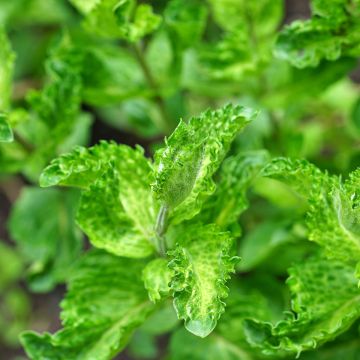
Comments